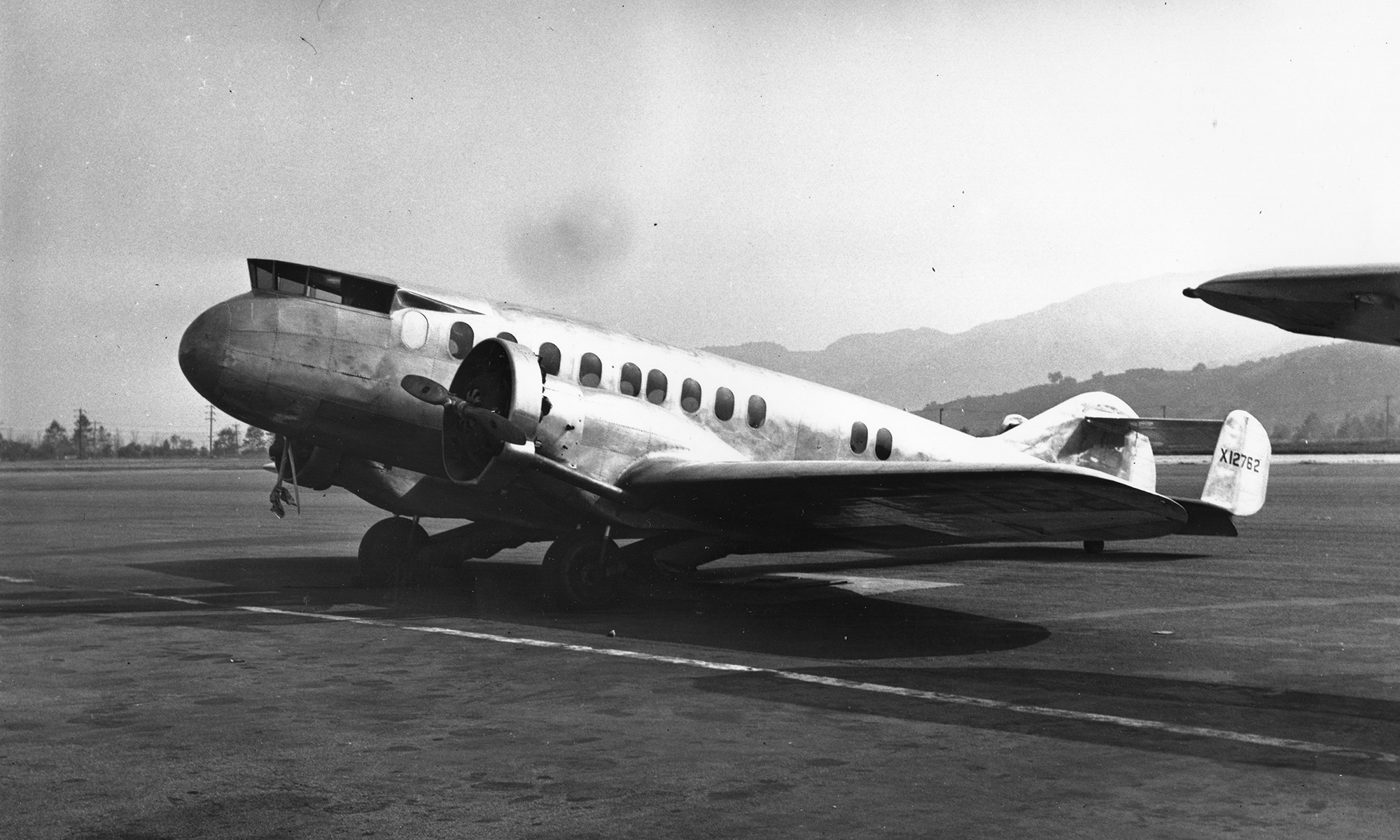Capelis XC-12
Founded by Socrates H. Capelis, the Capelis Safety Airplane Company was one of the most ironically named airplane manufacturers of the 1930s, considering that only one of its products, the XC-12 featured here, ever got off the ground…and it was not renowned for its safety.
Capelis’ original design called for a half-span dorsal wing mounted just aft of the forward cabin, with two additional engines on the wing. A major redesign by John E. Younger was scarcely less odd, being a standard low-wing monoplane with two wing-mounted 525-hp Wright Cyclone R-1750 engines and two horizontal stabilizers and two extra vertical surfaces on either side of the fuselage-mounted fin and rudder. The wing consisted of a large box-spar structure with corrugated skin panels, held in place not with rivets but sheet-metal screws that incessantly vibrated loose and had to be inspected and re-secured regularly. The retractable landing gear extended automatically when the throttle was closed. Capable of carrying 12 people, it weighed 6,500 pounds empty and 9,500 loaded. Maximum speed was 220 mph and cruise 190 mph, with a ceiling of 28,000 feet.
Built with the help of University of California students, the Capelis XC-12 first flew in 1933 and did a fair amount of promotional flying that attracted attention but no particular interest from any airlines. Then, on a flight to Glendale, Calif., on April 15, 1938, the airplane ran out of fuel and force-landed at Fresno. In the course of repairs its original eight-piece windshield was replaced by a four-piece version, but by then the XC-12 was judged so unsafe that its promotional flying days were declared over. In March 1939, however, the plane finally found a buyer: RKO Radio Pictures, whose insurance company promptly grounded it. Undaunted, RKO used it as a full-scale prop, sometimes supplemented by a model, to make appearances in 19 motion pictures (some of which were on loan to other studios), including Five Came Back(1939), Flying Tigers(1942) and Immortal Sergeant(1943). Having thus attained a measure of immortality in the eyes of aviation movie buffs, the worn out remains of the Capelis XC-12 were finally scrapped sometime around 1950. The model soldiered on at least up to China Gatein 1957.
This feature appeared in the September 2019 issue of Aviation History. Subscribe here!

